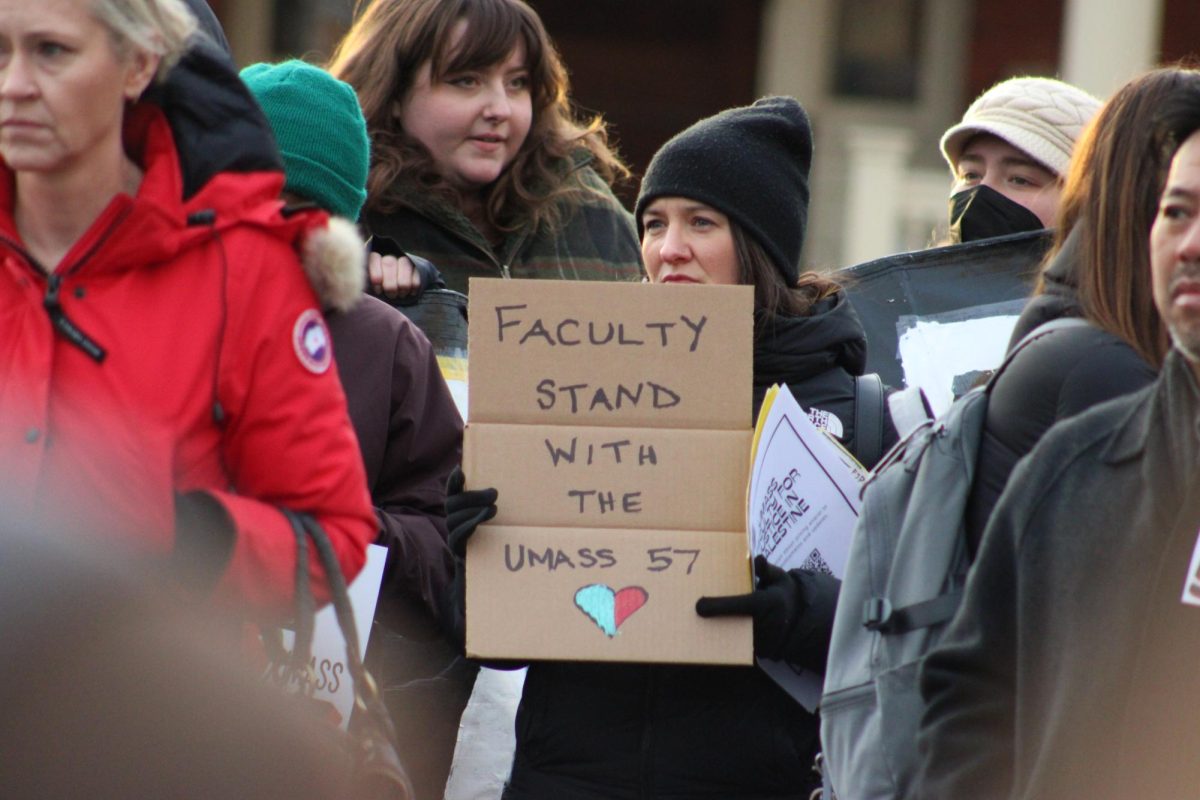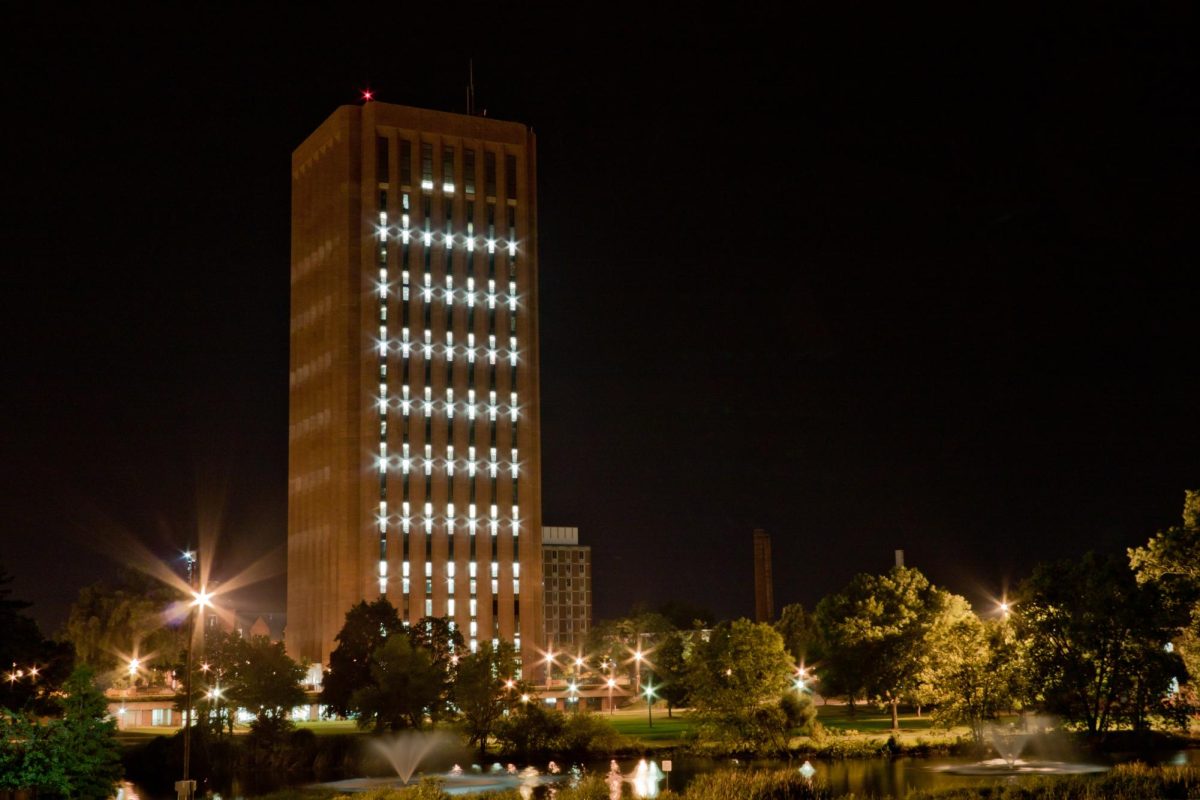Dear Editor,
Re: “Prohibition is not working,” Daily Collegian 9/28
If health outcomes determined drug laws instead of cultural norms, marijuana would be legal. Unlike alcohol, marijuana has never been shown to cause an overdose death, nor does it share the addictive properties of tobacco. Like any drug, marijuana can be harmful if abused, but jail cells are inappropriate as health interventions and ineffective as deterrents.
The first marijuana laws were enacted in response to Mexican immigration during the early 1900s, despite opposition from the American Medical Association. Dire warnings that marijuana inspires homicidal rages have been counterproductive at best. White Americans did not even begin to smoke pot until a soon-to-be entrenched federal bureaucracy began funding reefer madness propaganda.
Marijuana prohibition has failed miserably as a deterrent. The U.S. has higher rates of marijuana use than the Netherlands, where marijuana is legally available to adults. The only clear winners in the war on marijuana are drug cartels and shameless tough-on-drugs politicians who’ve built careers confusing the drug war’s collateral damage with a relatively harmless plant.
Students who want to help end the intergenerational culture war otherwise known as the war on some drugs should contact Students for Sensible Drug Policy at www.SchoolsNotPrisons.com.
Sincerely,
Robert Sharpe, MPA
Policy Analyst
Common Sense for Drug Policy
Washington, DC
——-
Dear Editor,
Representative Karyn Polito (R-Shrewsbury) is playing a dangerous game of political roulette with the health and welfare of thousands of individuals with disabilities at stake. In her transparent attempt to be fiscally prudent she is endangering vital funding for residential, employment and family support programs. After the combined efforts of The Arc of Massachusetts, ADDP, the Governor, and most of the Congressional delegation, the critical FMAP (federal matching Medicaid monies) extension passed. It will bring our state an additional $500 million, but Rep. Polito stands in the way of these dollars reaching Massachusetts families who are struggling.
Citizens who have written to her in the past few days have gotten the response that the bill is being “pushed forward during informal sessions of the House when there is no meaningful opportunity to debate, amend and vote on the bill.” This doesn’t make sense, because last June both the House and Senate did approve a 2012 budget with FMAP dollars and most of the very line items that are in the spending bill. The line items were reduced by the Governor, but it was agreed that if the new FMAP dollars did materialize, they could be added through a supplemental bill.
Why object now?
Sincerely,
Leo Sarkissian, Executive Director
The Arc of Massachusetts
Waltham, Mass.
——-
Dear Editor,
Last week, I attended a talk by Michael Arad, the designer of the World Trade Center’s September 11 Memorial called “Reflecting Absence.” This talk was sponsored by the Architecture and Design program at the University of Massachusetts and it touched on many aspects of the design evolution from conceptualization through the nuts and bolts of construction and on to which trees would provide the best canopy for pedestrians.
He related his belief in the power and appropriateness of his design during the competition even though the odds against it selection had been daunting. He related the frustrations and triumphs in working with other stakeholders to achieve a design that would be meaningful, enduring and most important, meet the building codes and public safety requirements.
He talked about concepts he had learned from his professors and how he had synthesized them. He emphasized that everything needed to be addressed in the design stage, because once it is finalized, you can’t be told, for example, that it needs a railing, because that would change the perspective of the entire memorial.
After the formal talk, he asked for questions and I took the opportunity to pose one that intrigues me. I began my question stating that “the meaning of memorials change as the understanding of the event evolves over time. The event that this memorial recalls is the death of thousands of people after planes hit the building, creating fires that led to their complete and catastrophic collapse down into their basements.” I identified myself as a registered professional engineer and one of over 1300 architects and engineers that believe that the evidence is overwhelming that the three skyscrapers were, in fact, destroyed by controlled demolition using pre-planted explosives. I continued, “How will the meaning of this memorial change as those irrefutable facts become more well-known?” Arad declined to answer that question stating his disagreement with my premise.
While disappointed with his response, I sat half-listening to other questions while I silently recounted my own evolving experiences with another memorial – the Vietnam Memorial. My first visit was in 1985 shortly after its completion. At that time it was a place to remember individuals; to touch the small voids in the wall that spelled their names; to reflect on the void that their sacrifices left in their world. It was a place to remember individual losses and sacrifices. Over the years as I learned more about the Vietnam War including the deceit behind the Gulf of Tonkin incident, the meaning of the memorial shifted to the immensity of the tragedy. In recent years as I have advocated for veterans with Post Traumatic Stress Disorder (PTSD), and learned that if the wall were to be expanded to include veterans that committed suicide upon their return, it would need to be two to six times larger. So now, to me, the meaning of that memorial has become a symbol that calls out for peace, truth and justice so that such a senseless war never occurs again.
As I reflect on the design that Michael Arad has brought forth, I believe that because of its focus on loss and remembrance it will be an enduring design whose meaning can grow and adapt as our understanding of the events of that day in 2001 evolve. I look forward to experiencing it once it is open to the public.
Wayne H. Coste, P.E.
Tariffville, CT
Architects and Engineers for 911 Truth






Dwain Deets • Oct 9, 2010 at 1:25 am
Wayne Coste raises a very interesting question about possible changing meanings as the public becomes more aware of the evidence, and its implications. Another consideration is the hundreds of Ground Zero workers who have lost their lives due to the highly toxic conditions. Will the memorial grow in meaning to encompass those victims as well?
I am, as well, an engineer with Architects & Engineers for 9/11 Truth.